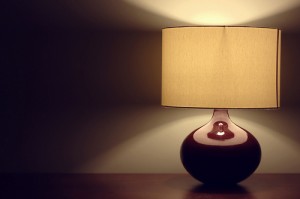Total Retrofit? Probably Not. Single Room Automation? Now We’re Talkin’!
 A complete retrofit of an existing home to incorporate smart technologies for energy management and home automation can sometimes be overwhelming to Chicagoland homeowners, both in terms of cost and complexity. Because the energy and time savings from utilizing such systems can be significant, it is worth looking at lower cost solutions.
A complete retrofit of an existing home to incorporate smart technologies for energy management and home automation can sometimes be overwhelming to Chicagoland homeowners, both in terms of cost and complexity. Because the energy and time savings from utilizing such systems can be significant, it is worth looking at lower cost solutions.
One option is to use single room automation. Unlike systems that are installed throughout a home using structured wiring and data cables, single room systems can often be installed into existing Chicagoland homes without tearing out walls to run additional wiring. While they are sometimes limited in functionality, many of these systems can be expanded later.
An example of an effective single room automation solution is lighting control. Many lighting control systems offer automatic timing devices to adjust lighting based on user settings. Some of the more modern systems, however, are more automated and use sensor inputs to control lighting in a single room.
Room lighting comes in two forms – natural light and artificial light. Natural light “harvesting” is a term used to describe the use of daylight to augment artificial room lighting during daytime hours. Some companies, like Lutron, now make small systems that combine dimmer switches with automatic window shades. Other companies, like HAI, make systems that are modular and can start in one room and expand to additional rooms.
These systems can be combined with sensor technologies to increase flexibility. Daylight sensors can be used to determine light levels and automatically lower the level of artificial lighting in the room by adjusting the dimmer switchers. This system also works with a motion sensor to determine the presence or absence of people in the room, and can raise or lower light levels accordingly. The new dimmer switches are compatible with dimmable LED or fluorescent lighting.
Single room solutions make sense in a number of cases: for small, open concept Chicagoland homes where one large central area is the location of the majority of activity in the home; classrooms, studios, or exhibit rooms with high levels of natural light; and, larger, older homes that may be inherently energy inefficient, but are difficult to automate with a whole-house system. The bottom line is that with new products on the market, there is a solution that can increase energy efficiency in lighting in a convenient, automated way, even for those on a tight budget. Discuss some of these options with your Chicagoland electrician, who can help you determine if these technologies are within the realm of possibility for your home.






